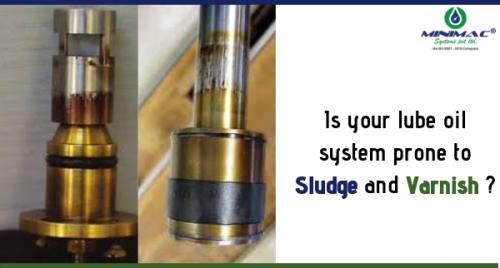what is varnish and its effects

The condition of the oil in lubrication and hydraulic systems is indicative of the health of the entire system. There are two essentials for ensuring productivity, for avoiding malfunctions and for reducing operating costs: 1. Monitoring the fluid condition 2. Continuous maintenance of operating equipment
Varnish is a soluble and insoluble contaminant made up of by-products of oil degradation and oxidation. It can appear as a gel-resin like consistency or resemble solid deposits in the oil, or which plates out on the metal surfaces of lube systems. It can be the result of several possible root causes, including high temperatures, electrostatic discharges, lubricant degradation and micro dieseling. Varnish can produce a number of problems related to machine operation, such as valve stiction, lubricant flow restriction, clogged filters, etc.
How is varnish different from sludge?
Varnish is a tough, adherent oxide or carbonaceous material that coats internal machine surfaces. Hot surfaces and/or time will often cure varnish to a hard/brittle consistency. In contrast, sludge, which is sometimes a precursor to varnish, is soft and sticky and can move about the system until finally coming to rest at sump bottoms, troughs, strainers, filters, and narrow fluid passages. To know more follow: https://www.linkedin.com/company/minimacsystemsprivatetlimited
What are the main causes of varnish in your system?
To summarize the prime reasons for varnish generation is following:
1. Pressure-induced thermal degradation. 2. Pressure-induced dieseling
3. Oxidation Is your system susceptible?
There are a number of reasons why lube oils suffer from high rates of varnish contamination. If your system ticks any of these boxes, then you should test your oil for varnish potential: for Oil Check call +91 8975150700 • Visible deposits or discoloration of lube circuit components • If you switched from group I to group II oil, or if you have blended oils • The high flow rate of lube oil from a small lube oil reservoir • High operating temperature • A gas turbine, gas compressor, or hydraulic system How to physically identify if there is a change in chemical composition?
The following can be the warning signs that the oil has undergone chemical changes: • Change in oil colour • Strong odour • Change in oil consistency • Sludge and hard deposits on metal surfaces • Visible contaminants in oil samples
If you are facing varnish deposits, two actions are recommended to control it. First, identify the root causes. This will require a systematic study of the possible factors supported by oil analysis. Next, remove the existing varnish in the machine.
At Minimac Systems, we offer flushing services and filter check services which ensure a clean system including oil tanks and lines. Book an appointment with our technical expert by clicking on https://www.linkedin.com/company/minimacsystemsprivatetlimited or call +91 89751 50700

Comments